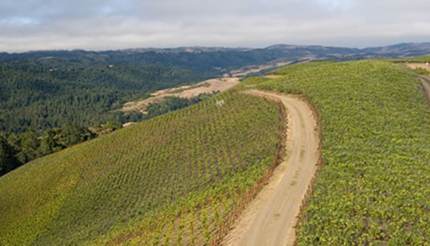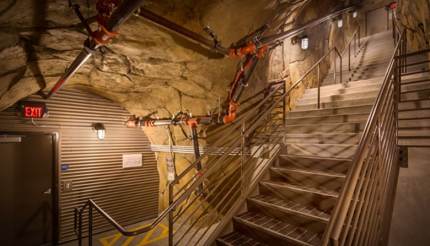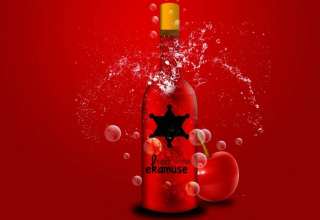Tech tycoon brings science and engineering to bear on time-honoured Burgundy practices
By Roger Morris
A Silicon Valley tycoon reckons he can make red wines as good as Burgundy – by applying cutting-edge science and engineering to centuries’ old vineyard and cellar practices.
“I’m using the same 1830s winemaking process,” says T.J. Rodgers, owner of Clos de la Tech in the Santa Cruz mountains, “but I’ve applied technology to the process. Making wine isn’t an art; it’s a science.” Rodgers founded and until recently headed the Texas electronics company Cypress Technologies, and he’s also owner and chief winemaker of the aptly-named Clos de la Tech.
The former CEO stuck his toes into the wine business in 1994 when he bought a house in Woodside, California that came with an acre of land. “I found out that it would take $150,000 just to landscape it,” he says, so instead he planted a pinot noir vineyard with the aid of Ted Lemon of the renowned Sonoma winery Littorai (and the first American to run an estate in Burgundy). A few years later, Rodgers founded his winery.
Rodgers had been at Stanford, where he graduated with a doctorate in electrical engineering. He was also awarded a fellowship which in 1972 took him to France and Burgundy. “I walked through a lot of vineyards, although no one spoke English, and I didn’t speak much French.”

After Stanford, Rodgers used the VMOS transistor technology he invented to found Cypress Technologies, which today is valued at $4.6bn. Along the way, he picked up a reputation invariably characterised as “brash,” which he probably wouldn’t disagree with. He also developed a reputation for combativeness – he left Cypress in 2016 after boardroom battles and filed a legal suit against the company earlier this year.
But Rodgers also has a passion for what he does and a disciplined approach that is evident when he sits down to talk, at great length, about winemaking.
A prime example of his application of technology to vineyard practices is his patented, solar-powered irrigation system. This has underground water probes so that moisture goes to a vine’s roots in the right amounts when it needs it and according to the vine’s natural fruit maturation process.
Two additional examples illustrate Rodgers’ attention to detail in the vineyard, but in contrasting ways. He teamed up with Clemens GmbH in Germany to produce a unique tractor to navigate the very steep slopes of his Lois Louise vineyard. Because it runs on a cable system, the tractor needs no motor, steering wheel or brake. At the other end of technology, “We use a process called ‘tipping’ to remove tendrils to stop green growth and put more energy into berry growth,” Rodgers says. Unfortunately, there is no machine that can do this, so it is laboriously done by hand.
In the cellar, Rodgers uses a gravity flow system – as do many modern wineries. But who else has three separate, drilled-into-the-mountainside caverns with the wine flowing from one tunnel to a lower one? “I’m always amused when I visit someone’s ‘gravity-flow’ winery and see what looks like a pump,” he says. “When I ask what it is, they say, ‘Oh that’s a pump, but I never use it.’ I don’t even own a pump.”

In Clos de la Tech’s cellar, grapes are foot-trodden in vats. But even here, Rodgers uses modern science to adjust an old process. He adjusts the length and timing of foot crushing to get the right amount of tannins, as measured in the laboratory, out of the skins at the right time.
Today, Clos de la Tech has grown to include three vineyards, with about 30 acres in production. Because of low yields, Rodgers produces only 2,200 cases annually, with many wines scoring in the high 90s. All are reasonably priced (for California) between $60 and $130. He has twice tried to make chardonnay, but says the results were “somewhere between mediocre and bad, and I didn’t want to make a house chardonnay just to have a white wine on the table.”
And yet he’s tempted to start all over and do it elsewhere. “I’ll admit that I’m jealous of Oregon,” he says. “The vineyards there load up the soil with water early in the year, the best time to have it – and with no irrigation.”
So is a vineyard and winery in Oregon part of the future? A private jet would make it possible for Rodgers to jump between vineyards. “After all,” he says of the 700-mile journey, “Oregon is only an hour and 15 minutes away.”






